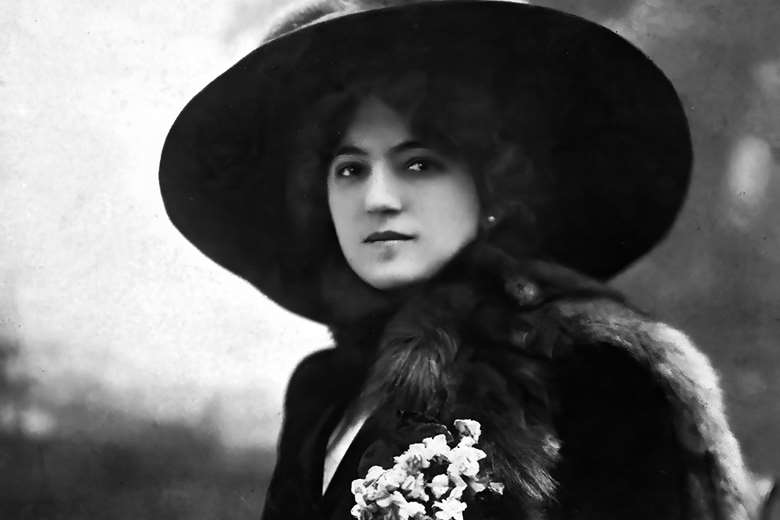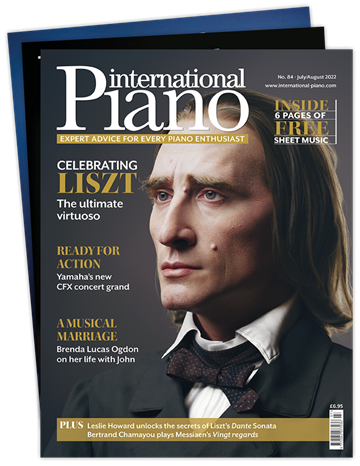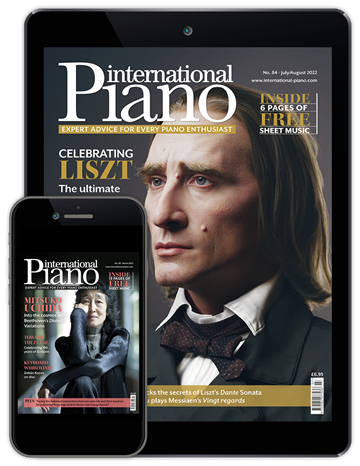Ilona Eibenschütz: piano-playing from another era
Mark Ainley
Friday, August 30, 2024
Mark Ainley revisits the playing of the Hungarian pianist Ilona Eibenschütz, who knew Brahms and Clara Schumann, and whose pianism sheds fascinating light on the kind of playing they might have expected to hear

Historical recordings can serve as a kind of sonic time machine, enabling us to experience the music-making of great interpreters of the past. While written testimonials and treatises are important, the printed word will always pale in comparison to hearing performances with our own ears, and some vintage recordings can challenge preconceived notions of how the most beloved music in the repertoire was played when it was new or relatively recent.
One fascinating pianist whose scant but invaluable recorded legacy is revelatory is Ilona Eibenschütz. Born in 1873 (not 1871 or 1872 as sometimes published), she was a child prodigy for whom Liszt predicted a great future, and she began her studies with Clara Schumann at the age of 13. She was not much older when she met Brahms, who is said to have preferred her way with his music to anyone else’s; in 1892, when Ilona was not yet 20 years old, Brahms played for her from the manuscript his newly written Opp 118 and 119 pieces: she was the first to hear them and she went on to publicy premiere them.
Her depth of tone, clarity of line, rhythmic vitality and conviction of conception are beguiling
One might well wonder why this outstanding pianist has been so forgotten today, especially given the fact that this exponent of the Schumann and Brahms lineages died as recently as 1967 at the age of 94. As was the case for many female artists of her generation, Eibenschütz gave up her career when she married in 1902, and at that time recording technology was in its infancy and quite primitive. Fortunately the few early discs that she made have been supplemented by broadcast and private recordings produced half a century later, historical documents that are illuminating to say the least.
Her only official recordings amount to about seven minutes set down in December 1903 for Gramophone & Typewriter Ltd (G&T), and despite being faint in acoustic they are bold in temperament, with dazzling fingerwork, spirited momentum and fluid phrasing. However, a pianist with such a fiery disposition could not be well served by the constricted sound of such early discs, and the later private recordings provide more important insights into both her pianistic mastery and her approach to music of the late 19th century, and of earlier eras too.
Not all of these audio documents from the early 1950s through to the mid-1960s have been published – they were only ever intended for private use – but several can be heard online; some were produced at her London home while others identified as ‘private HMV recordings’ were likely set down at EMI’s Abbey Road Studios. Eibenschütz was naturally not at her pianistic peak in her 80s and 90s, after decades away from the concert platform, but as the best of these recordings reveal, she was still capable of vivacious and perceptive playing. A fascinating testimonial from this period comes from the legendary Dinu Lipatti, who in April 1948 was invited to her home while he was in London recording his famous account of Schumann’s Piano Concerto: they spent several hours playing for one another, and Lipatti wrote that Eibenschütz played ‘divinely’ and that he was particularly ‘struck by how little rubato she employs, all while playing so freely’. This is especially fascinating given that most listeners today find Eibenschütz’s timing adjustments to be somewhat extreme.
Among the most important of Eibenschütz’s recordings is a spoken reminiscence that was broadcast on the BBC in 1952. She was 79 at the time, and she read aloud an essay that had been published in the 1920s in which she shared stories about hearing Brahms and his colleagues play; she also played a few musical fragments on the studio piano. It is miraculous to hear the voice of someone who knew Brahms talk as if speaking to us directly, and her playing is truly from another era.
Perhaps the most immediately striking aspect of Eibenschütz’s pianism is her pacing. Today, Brahms’s music is often played with dense textures and at tempos that can lapse into the lugubrious, so it is quite a shock to hear a pianist who knew the composer playing part of his Op 10 No 4 Ballade at double its normal speed, quite unlike the way it is usually played. Her Schumann Arabeske seems brisk, yet her account is in fact closer to Schumann’s tempo marking than the trend today: Schumann’s opening tempo is crotchet=152, significantly faster than the vast majority of pianists play it, which is ironic given our present age’s emphasis on respect for the score.
But there is much more to Eibenschütz’s very personal pianism than speed: her depth of tone, clarity of line, rhythmic vitality and conviction of conception are beguiling, as are the freedom of spirit and spaciousness of timing to which Lipatti referred. Multiple readings of a handful of Brahms’s compositions are of particular interest, among the most revelatory being the Intermezzo, Op 119 No 2 (one of the works that Brahms had played privately for her), with soaring lines and incredibly spacious transitions that give the impression that the piece is being improvised (this is how Eibenschütz described the composer’s own playing); these qualities are also notable in her readings of the Intermezzo, Op 76 No 4.
Also remarkable is a tantalisingly brief excerpt from Beethoven’s Op 109 Sonata that is played with disarming directness and speed. Lacking any hint of the heavenly reverence with which this work is usually played, this snippet finds the work’s depth revealing itself with natural simplicity through her transparent textures, clear lines and sumptuous tone. Some Schubert and Brahms song arrangements are also glorious, as are some Scarlatti sonatas. Not all extant recordings capture her at her best but there are sufficient signs of the brilliance she must have displayed in her prime, while her playing also raises the question of how different late 19th-century musical sensibilities might have been.
We are fortunate that over 150 years after her birth we are more than ever able to explore the playing of Ilona Eibenschütz. A book featuring her correspondence with Clara Schumann has been published in German (Die Schülerin – Die Meisterin, published by Verlag StadtMuseum Bonn in 2019) and online one can hear important examples of her pianism as well as her BBC talk; I have also uploaded to YouTube an interview I recorded with her grandson. If these recordings showcase a style of pianism that cannot be authentically replicated in today’s musical culture, they reveal some of the spirit in which these works could be played and provide important considerations on the nature of interpretation.
This article originally appeared in the Autumn 2024 issue of International Piano. Never miss an issue – subscribe today












